Did you know: In the last decade, luxury penthouse sales in global cities like London have surged by over 150%, setting new standards for urban living. London penthouse design delivers innovation that not only transforms your living space but can redefine how you experience everyday life . Imagine a home where panoramic cityscapes meet rich textures , where every detail reflects world-leading interior design and craftsmanship. This guide reveals how you can harness the unmatched sophistication of London penthouse interiors for your own space—whether you want to feel like you’re living in the clouds or crave seamless technology and timeless luxury.
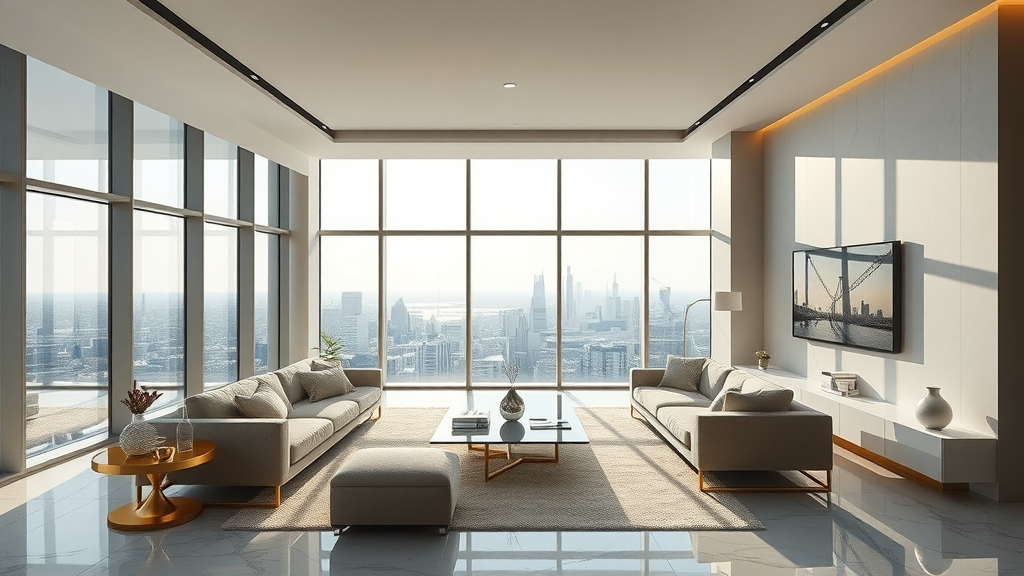
How London Penthouse Design Shapes Urban Luxury Living
London penthouse design stands at the forefront of urban luxury living, blending architectural ingenuity, advanced technology, and refined aesthetics. These exclusive residences—from the heart of Mayfair to the vibrant South Bank—showcase a mastery of interior design that is both aspirational and practical. Whether you're drawn to sprawling open layouts or intimate zones within your penthouse, the possibilities for living spaces are virtually endless.
Unlike standard luxury apartments or even the most coveted New York high-rises, London penthouses feature distinct amenities, like private elevators, chef-designed kitchens, and panoramic city views . Such features create a sense of exclusivity and contribute to the global allure of luxury London penthouse living. Sophisticated elements such as custom media rooms , expansive terraces, and curated lighting design set the benchmark for aspirational city living. For anyone seeking a transformative urban experience, a penthouse in London offers an unmatched combination of prestige, privacy, and style.
The Impressive Growth of Luxury Penthouse Development in London
The last decade has witnessed a remarkable surge in luxury penthouse development in London. This increase is not simply a reaction to demand; it's an evolution in design philosophy, with developers partnering closely with renowned interior architects and designers to craft residences that set international trends. As these properties become more sophisticated, buyers expect cutting-edge smart technology , flexible living room concepts, and seamless integration between indoor and outdoor spaces .
The relentless pace of development in London means today's penthouses are more than just homes—they are lifestyle statements. The value of these properties, fuelled by innovation and attention to detail , continues to rise, establishing London as a magnet for high–net–worth individuals seeking the pinnacle of luxury penthouse living.
“London penthouse design has redefined the skyline, setting global trends in luxury living.”
What You’ll Gain from Understanding London Penthouse Design
- Key features that distinguish exceptional penthouse interior design
- Current trends in london penthouse design
- Essential elements for luxury interior design in penthouses
- How to choose the right interior architect and designer
By delving into the world of penthouse interior design , you'll learn how bespoke materials , innovative layouts, and an expert team can fundamentally transform your space . This knowledge empowers you to make choices that optimise comfort and create a home that truly feels like a luxury retreat.
Defining London Penthouse Design: Modern Elegance and Innovation
London penthouse design is celebrated for its seamless blend of modern elegance and relentless innovation. Every detail—down to the colour palette and spatial arrangement—reflects a global approach that draws inspiration from both classic and contemporary influences. The hallmark of these homes lies in their ability to create a sense of harmony between luxury and functionality, making them as liveable as they are impressive.
Signature features like floor-to-ceiling windows are not merely aesthetic, but serve to flood living spaces with natural light. The incorporation of smart home automation means every aspect of daily living—from climate control to lighting and sound—can be tailored to suit individual preferences. London's designers are known for reimagining penthouse interiors as dynamic environments, blending open-plan flow with intimate vignettes.
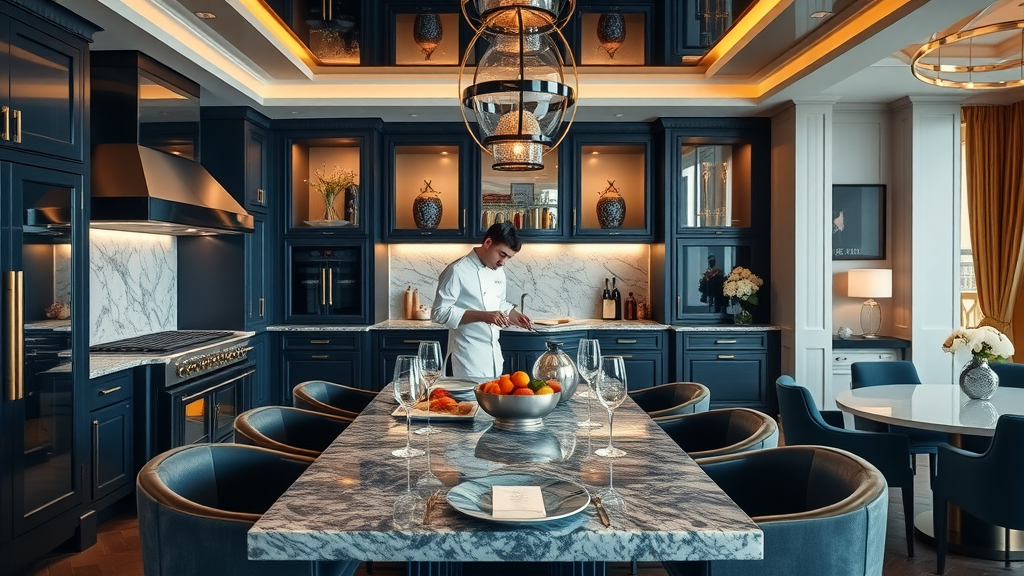
Core Principles of Penthouse Design in London
| Core Principle | Benefit |
|---|---|
| Floor-to-Ceiling Windows | Maximises cityscape views |
| Open Plan Layout | Enhances sense of space and light |
| Luxury Interior Finishes | Elevates sophistication |
| Smart Home Automation | Delivers modern convenience |
These core principles help create a penthouse interior that doesn’t just function as a home but as an extension of your lifestyle. Whether it's the awe-inspiring vistas or the tactile richness of luxury interior finishes , each aspect is carefully designed to transform the everyday into the extraordinary.
Penthouse Interior vs. Traditional Interior Design
The difference between penthouse interior design and that of traditional residences lies in an uncompromising attention to scale, flow, and materiality . Penthouses push the boundaries of urban living with soaring ceilings, bold layouts, and a relentless focus on panoramic views. While a traditional London flat may prioritise maximising square footage, penthouse design in London uses space as a canvas, orchestrating light, texture, and luxury throughout the home.
Materials such as Italian marble, bespoke cabinetry, and integrated technology give penthouse interiors a palpable richness that sets them apart. This is where the role of the interior designer or interior architect becomes crucial: ensuring that every decision—from the silhouette of a kitchen island to the placement of sculptural lighting—delivers both comfort and visual impact.
Ultimately, London penthouses feel like a sanctuary above the bustle – a meticulously crafted retreat with every modern convenience at your fingertips.
Penthouse Interior Design: Signature Features and Materials
Signature features define the best penthouse interiors—creating sanctuaries that appeal to the senses while supporting a contemporary lifestyle. In a London penthouse, premium materials , innovative lighting design , and attention to detail converge to produce spaces that are simply unrivalled in the city. Whether you’re aiming for a serene, minimalist backdrop or layers of tactile richness, each design choice contributes to an overall atmosphere of refinement and comfort.
Beyond the visual opulence, a true luxury penthouse incorporates high-spec appliances, custom joinery, and state-of-the-art smart home features. The resulting fusion of technology and artisanal craftsmanship makes every space—from living rooms to bedrooms and beyond—feel like an elevated experience crafted just for you.
Premium Materials for Luxury Penthouse Interiors
- Marble, onyx and stone flooring
- Bespoke joinery and cabinetry
- Integrated lighting designs
- High-tech appliances
Each element in a penthouse’s material palette is selected not just for its beauty, but for its ability to create a sense of exclusivity and comfort. From the soft sheen of polished stone underfoot to the seamless finish of custom cabinetry , these materials are as tactile as they are visually compelling. The kitchen island , often the centrepiece of the home, exemplifies this approach—combining elegance and utility to transform every occasion into something memorable.
How Interior Architecture Shapes Space
Interior architecture is integral to luxury interior design in penthouses. It orchestrates how you experience the space—from sweeping hallways adorned with contemporary art to cleverly configured zones that support work, entertainment, and rest. London’s leading interior architects employ thoughtful spatial planning to create harmony between luxury penthouse details and the practical needs of daily living.
Key features like glass walls , sculptural lighting, and fluid circulation mean that every area feels both welcoming and connected, yet allows for privacy and intimacy when needed. Through movement, material contrast, and expert use of natural light, penthouse interior architecture unites function with elegance—setting the stage for truly exceptional city living.
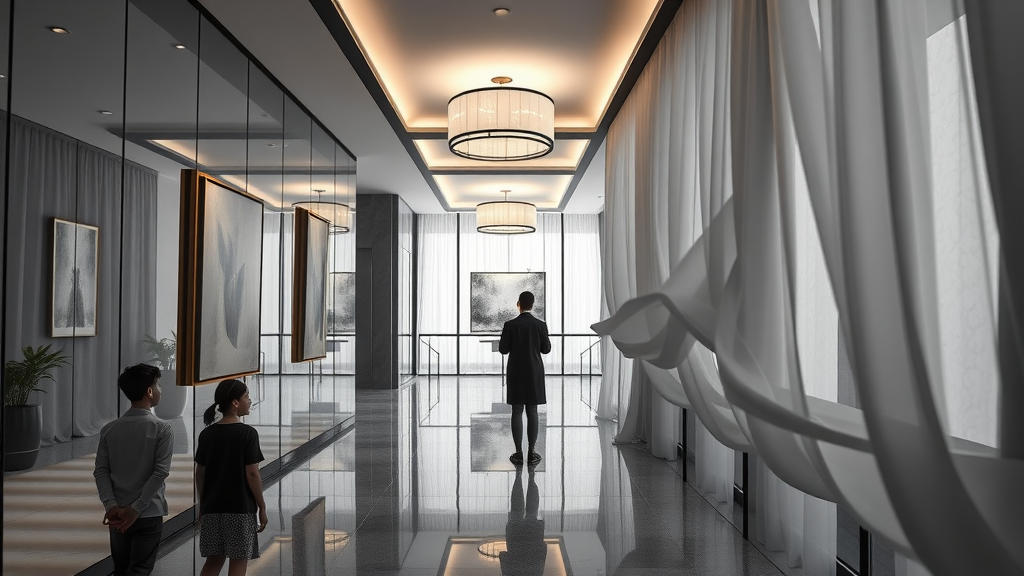
Luxury Penthouse: Creating Distinctive Living Rooms and Entertainment Spaces
The living room of a London penthouse is a showcase of comfort, ingenuity, and layered style . It’s often the focal point for entertaining guests or enjoying a quiet evening with family, designed to foster both connection and relaxation. Exceptional living spaces marry plush furnishings with high-end finishes—a fusion that invites you to linger and savour the panoramic city vistas, all while being cocooned in absolute luxury.
Multipurpose designs are increasingly popular, turning living rooms into flexible environments where technology, art, and architecture blend. The addition of a media room or smart home features ensures that entertaining is always effortless and engaging.
Living Room Ideas for Modern London Penthouse Design
Versatility is a defining quality of the modern penthouse living room . Think expansive layouts with sleek furniture that can be effortlessly reconfigured to suit the occasion, a curated blend of bespoke pieces and subtle technology, and colour palette choices that elevate the room’s mood. Neutral tones accented by deep navy or gold add sophistication, while layered lighting—from statement pendants to soft ambient sources—sets the scene for any activity.

One of the best features is the ability to blur the line between relaxation and entertainment—dedicated media spaces where you can enjoy films or music, intelligent connectivity for lighting and sound, and configurations that allow the room to feel like a private cinema or a lively gathering spot at will. The result? A true oasis above the city—a place where comfort and style meet innovation at every turn.
Media Room and Smart Technology Integration
Modern london penthouse design often integrates a dedicated media room or home cinema, providing the latest AV technology discreetly woven into the fabric of the interior. Acoustic treatments, blackout features, and intuitive controls mean you’re never more than a touch away from an immersive audio-visual experience. These spaces are purpose-built to offer effortless relaxation, entertainment, and a feeling of escape—all without leaving home.
Smart home automation ensures that controlling climate, lighting, security, and media is seamless. Integration is so refined it becomes invisible, allowing you to set moods or manage spaces with a command or a smartphone tap. The inclusion of these elements sets a luxury penthouse apart, offering both efficiency and a sense of futureproof sophistication.
Video Tour: Showcasing Jaw-Dropping London Penthouse Interiors
Selecting an Interior Designer or Architect for Your London Penthouse
Choosing the right interior designer or interior architect is critical to unlocking your penthouse’s full potential. Look for professionals with a proven track record in luxury interior design and a nuanced understanding of what sets penthouse projects apart from standard homes. An expert team brings creative vision, technical know-how, and a network of skilled tradespeople to deliver on even the most ambitious plans.
Consider portfolios that showcase previous luxury developments in London : the style, materials, and innovation you see there are the best indicators of what’s possible for your own project. Communication is key. A partner who listens to your needs, aligns with your lifestyle, and pays attention to the smallest details can help you achieve a home that feels genuinely bespoke.
Choosing the Right Interior Designer vs. Interior Architect
- What to look for in specialised penthouse interior design
- Portfolio review: Evaluating previous luxury developments in London
For full-scale transformations, bring together both an interior designer and interior architect —one for spatial vision and technical challenges, the other for finishing touches, furnishings, and mood. The synergy of this collaboration results in a space tailored to your dreams and lifestyle, ensuring every room — from bedrooms to media rooms — feels like an extension of your personal brand of luxury.
The Value of Outdoor Space in London Penthouse Design
Unlike most city apartments, a London penthouse often features coveted outdoor space —from private terraces with breathtaking skyline views to expansive rooftop gardens. These areas function as tranquil extensions of the interiors, blending nature, art, and luxury into a sought-after amenity. Outdoor spaces in luxury penthouses are designed for both visual impact and everyday usability, perfect for entertaining, relaxing, or simply soaking in the London atmosphere.
Access to dedicated terraces or gardens is a true differentiator, enhancing both lifestyle and property value. With expert lighting design , outdoor kitchens, fireplaces, or sculptural planting schemes, a penthouse terrace can feel like a sanctuary far above the city’s hustle.
Designing for Rooftop Gardens and Terraces

From minimalist Zen-inspired terraces to vibrant social pavilions with built-in seating and planting, London’s top penthouse interiors specialise in blurring the lines between inside and out. Designers focus on durable yet beautiful materials, integrating lighting and greenery to create a year-round oasis. The ultimate goal? To create a sense of retreat, with secluded nooks, water features, and breathtaking city views always close at hand.
Outdoor Space as an Extension of Luxury Interiors
Your penthouse’s outdoor space should not be treated as an afterthought but as a genuine extension of the home. Matching materials, consistent colour palettes , and coordinated furnishings allow the terraces, balconies, or gardens to flow naturally from the main living areas. With the right approach, even a compact terrace can feel like an open-air living room—complete with mood lighting, heating, and lush landscaping that echo your indoor style.
Video Inspiration: Transformative Outdoor Spaces in London Penthouses
Current Trends in London Penthouse Interior Design
The latest penthouse design trends in London embrace both sustainability and technology. A shift towards wellness spaces , biophilic design, and eco-friendly luxury materials puts occupant wellbeing at the centre. At the same time, integrated smart home technology ensures that every system operates efficiently and intuitively for a truly bespoke living experience.
Flexible open-plan layouts mean your penthouse can evolve with your needs, while a renewed focus on rich textures —from stone and timber to plush textiles—brings an inviting, tactile dimension to every living space . The result is a harmonious blend of comfort, sophistication, and progress.
Sustainable Luxury and Eco-Conscious Materials
Eco-consciousness is increasingly important in luxury penthouse design. Many interiors now feature responsibly sourced timber, recyclable stones, or energy-efficient lighting—delivering beauty and ethical peace of mind. By integrating these elements into their vision, top interior designers create homes where sustainability and luxury go hand-in-hand.
Smart Home Automation in Luxury Interiors
Automation is no longer a luxury—it’s essential in penthouse interior design . London penthouses are at the cutting-edge of smart home technology, connecting everything from climate and security to entertainment in a single, user-friendly hub. This level of convenience has become a hallmark of prime penthouse living and is a direct response to the evolving demands of discerning homeowners.
Costs and Value: Investing in London Penthouse Design
Investing in london penthouse design isn’t just about improving your living environment—it's about maximising long-term value. The following table outlines typical costs for major upgrades, giving you an idea of what to expect when transforming your penthouse.
| Feature | Expected Cost Range (GBP) |
|---|---|
| Bespoke Kitchen | £35,000 - £150,000 |
| Custom Bathroom Suite | £20,000 - £80,000 |
| Smart Automation | £10,000 - £50,000 |
| Outdoor Terrace Transformation | £25,000 - £200,000 |
These investments reflect not just finishes, but also the added comfort, convenience, and wow-factor that define penthouse interior design . Premium outlays bring exceptional returns in luxury london penthouse value and personal satisfaction alike.
People Also Ask About London Penthouse Design
What makes a penthouse in London different from other luxury apartments?
London penthouses typically offer expansive layouts, exclusive amenities such as private elevators, panoramic views, bespoke interiors, and superior privacy, setting them apart from standard luxury apartments.
How do interior designers approach a penthouse project in London?
Designers begin with client consultations to understand lifestyle requirements and aesthetic goals. They leverage the unique architectural features of the penthouse, source luxury materials, and integrate advanced technology for a tailored result.
What are the top trends in london penthouse design for 2024?
The latest trends centre on flexible open plans, biophilic design, wellness spaces, eco-friendly materials, and smart home technology for personalised experiences.
Leading London Interior Designers Share Their Insights
Frequently Asked Questions About London Penthouse Design
-
How much does a full penthouse interior fit-out cost in London?
Costs vary widely depending on scope and finish, but a comprehensive fit-out can range from £350,000 to well over £2 million for ultra-premium penthouses. Factors like bespoke materials, high-end appliances, and planning permissions all influence final pricing. -
Can older penthouses be retrofitted with smart home automation?
Yes. Advances in technology allow older penthouse interiors to be upgraded with integrated automation for lighting, security, climate, and media—without compromising original character. -
How does location within London impact penthouse design options?
Prestigious locations like Knightsbridge, Mayfair, and Canary Wharf offer more flexibility in design and access to premium amenities, whereas listings in heritage districts may be subject to conservation or planning restrictions. -
What is the average timeline for a penthouse interior design project?
Most full-scale penthouse projects take between six months and two years, depending on complexity, planning, and the level of customisation involved.
Expert Tips for Achieving Your Dream London Penthouse Interior
- Prioritise natural light with strategic window placement
- Blend luxury finishes with practical layouts
- Collaborate with an experienced interior architect
- Incorporate smart home solutions
- Design seamless indoor-outdoor transitions for terraces
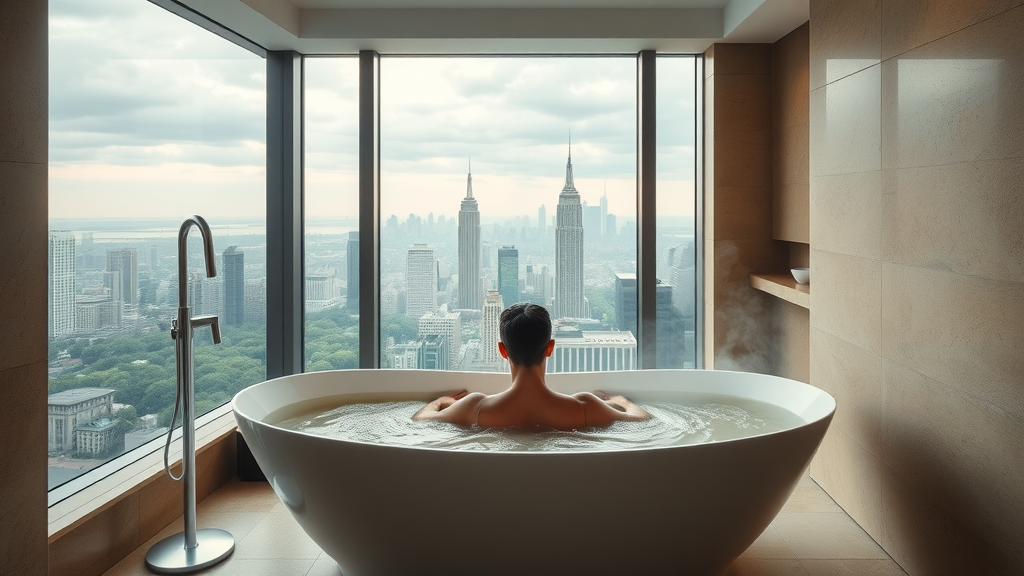
“Investing in bespoke london penthouse design is a testament to both vision and value.”
Unlock the Full Potential of London Penthouse Design for Your Space
The world of london penthouse design awaits—unlock a new standard for urban living and transform your space into a sanctuary of style, comfort, and innovation.
To stay ahead in the world of luxury penthouse living, visit us at https://buildingconstructiontrade.com/ for more building and construction news.
Exploring the realm of London penthouse design reveals a fusion of modern elegance and innovative features that redefine urban luxury living. For instance, the transformation of The Whiteleys building into a neoclassical-inspired apartment showcases how historic architecture can be seamlessly integrated with contemporary design elements, offering panoramic city views and bespoke interiors. ( wallpaper.com ) Similarly, the Chelsea Penthouse project by Naomi Astley Clarke exemplifies the infusion of Hollywood Regency glamour into a triplex apartment, featuring mirrored staircases and vibrant detailing that create a unique and inviting family home. ( naomiastleyclarke.com ) These examples illustrate the dynamic possibilities within London penthouse interiors, blending historical charm with modern sophistication to craft spaces that are both luxurious and personalized.
 Add Row
Add Row  Add
Add 

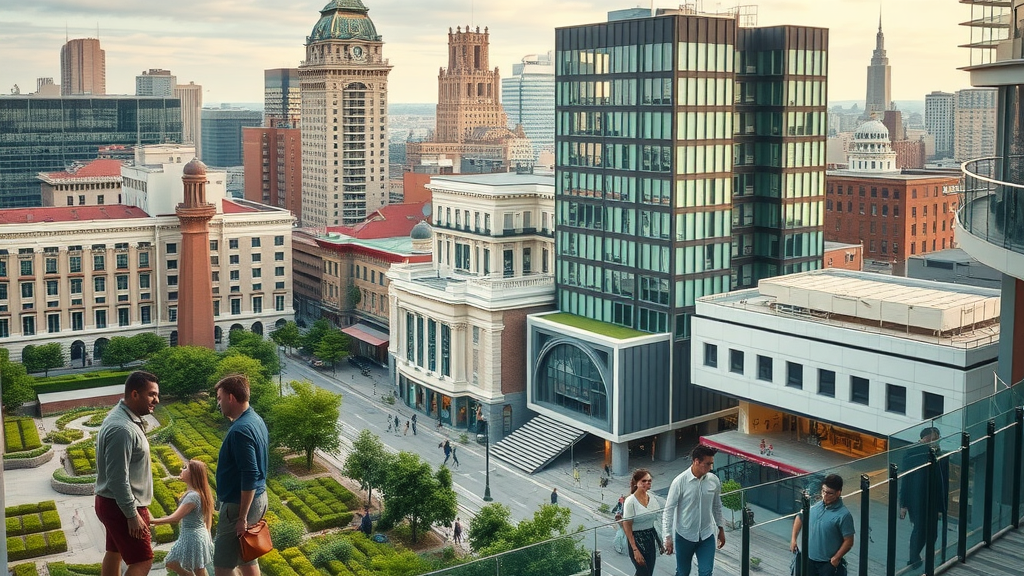
Write A Comment